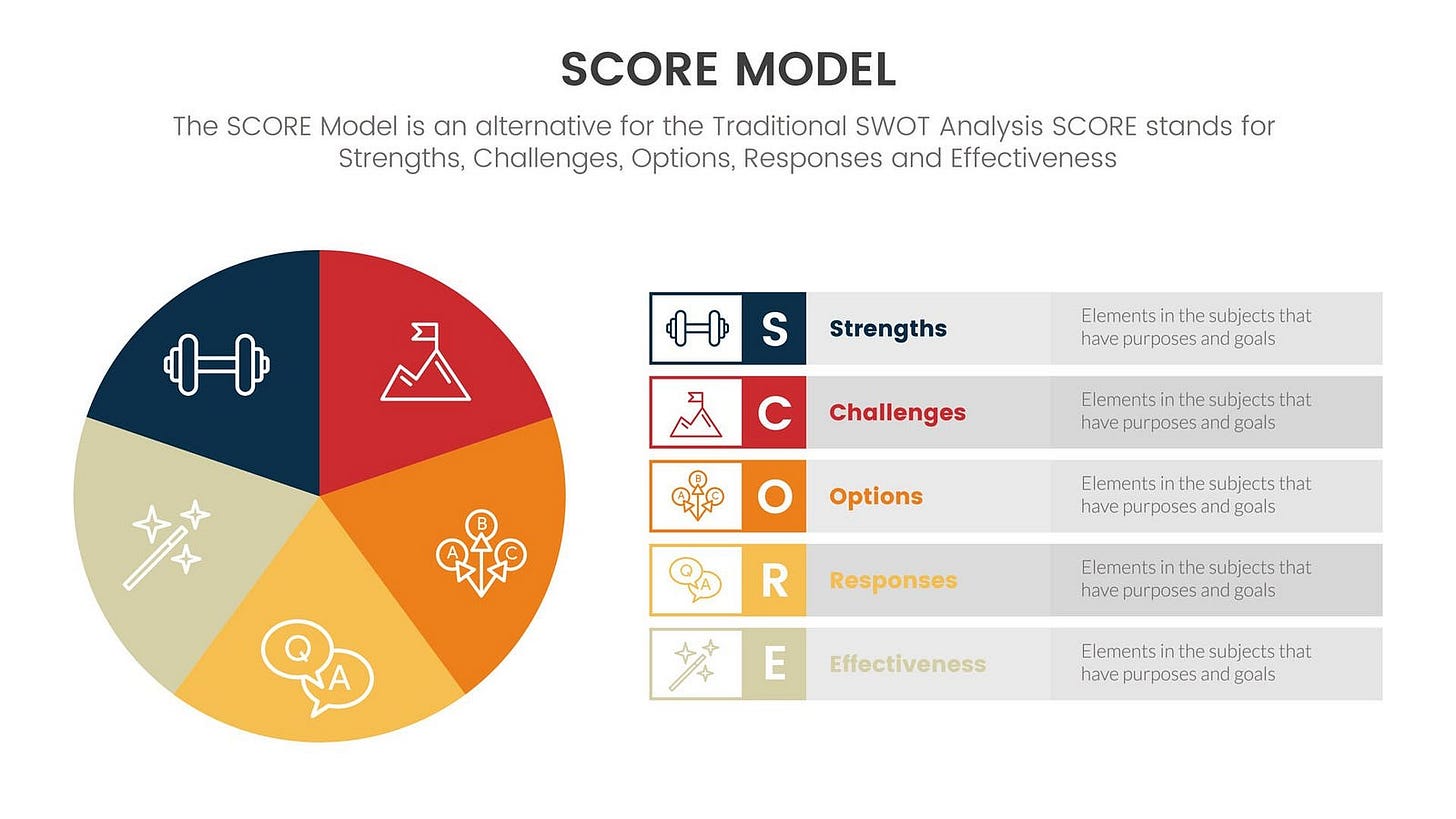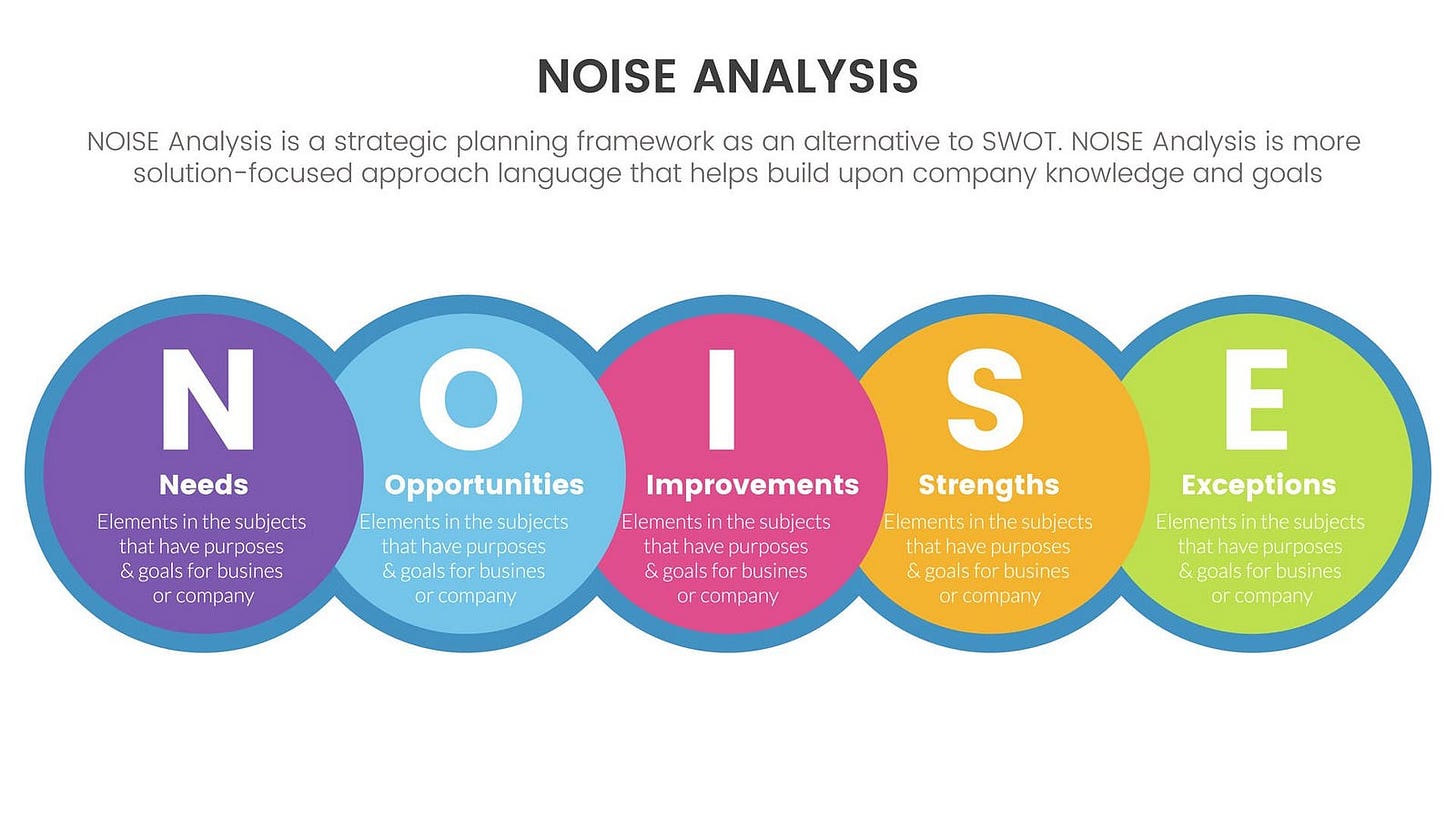Go Beyond The SWOT Analysis For Strategic Planning
Discover startup strategic planning techniques beyond SWOT analysis and explore alternative frameworks for startup success
I’m a big fan of strategic planning on many time horizons. There’s the short-term (3 to 6 months), mid-term (6 to 12 months), and then long-term (12+ months). To do a proper strategic plan requires a deep understanding of what’s going on in your market, where opportunities might lie, and how strong or weak you are as a market participant.
Sadly, many Startups never quantify those things. They shoot from the hip and feel they have a good handle on their market. They never bother with a full strategic plan or a simple SWOT analysis. Granted, SWOT analyses can feel like a root canal, but they do help drive the planning conversation.
I’m a proponent of SWOT because of its simplicity, but I’m also a proponent of choosing a planning framework that works for your particular market.
With SWOT you thoughtfully analyze your Strengths, then you’re Weaknesses in the market, followed by any Opportunities that are being missed, and lastly by what Threats are out there that might wipe you out.
While SWOT sounds so simplistic, it’s rather an old way of analyzing markets and might not fit your industry best. Here are four (4) alternatives to SWOT that might fit what you’re looking for depending if you’re more of an action, motivational, or analytically-focused organization.
SCORE Analysis
SCORE is a new methodology that’s often referred to as action-oriented. SCORE is an acronym for Strengths, Challenges, Options, Responses, and Effectiveness.
Strengths are what you’re good at or could be good at. Challenges are where you’ll need help or resources to get things done. Options are related to opportunities in the market but with an eye towards their risk.
Responses relate to how stakeholders will “respond” to your new strategy, and finally, Effectiveness is how reliable and efficiently you’ll implement this new strategy.
If you’re familiar with SWOT, SCORE is an easy extension but it does require action. Without action, this methodology becomes just another unexecuted strategy planning process.
NOISE Analysis
The NOISE analysis is similar to both SWOT and SCORE but it tends to be very analytical in nature. It starts with Needs, Opportunities, Improvements, Strengths, and Exceptions.
Using this analytic framework you need to ask yourself, what are the Needs of your organization to make something a reality? What internal processes or groups you’ll need to align to get the job done!
Further, you’ll need to define the potential Opportunities you could seize. What organizational Improvements can you make to seize said Opportunities? How will you leverage your internal Strengths to make said Improvements to seize Opportunities and meet the organization’s Needs! Finally, what are the Exceptions to the Needs, Opportunities, Improvements, and Strengths that could derail or prevent the execution of your plan?
SOAR Analysis
SOAR is one of those methodologies that is motivational. It’s not one of my favorites but if used in conjunction with a good execution plan, then it becomes usable in my opinion.
The analysis starts out by asking what your organization’s Strengths are, and what does it do well. Followed by Opportunities and what it could achieve. Then it asks for your organizational Aspirations, the dreams and wishes of your organization. Finally, it asks you what kind of Results do you want to see.
Porter’s 5 Forces
I left the classic one for last because of the impact it made on my education. I would argue that SCORE, NOISE, SOAR, and SWOT are just derivations of this framework, because this framework looks at the holistic external pressures that an organization must face.
Porter’s 5 Forces is not a simple framework or tool you can whip out during a meeting. It requires time and deep introspection by the C-suite and management. I would argue that SWOT, SCORE, NOISE, and all the rest are just tactical strategic planning for short to medium time frames. The Porter framework is what you use for long-term strategic planning
Porter’s 5 Forces are:
Bargaining Power of the Buyer
Bargaining Power of Suppliers
Threats of Substitutes
Threats of New Entrants
Industry Rivalry
While these forces are somewhat explanatory, an example would serve best to highlight each force.
In my “Is Your Cloud Competition Slaughtering You” article, I use the example of AutoML in the Data Science and Machine Learning industry. At its peak, every Startup in this space had an AutoML offering. There were dozens of them but the main ones were H2O and DataRobot.
These AutoML startups with their products represent Industry Rivalry in the 5 Forces. These are your day-to-day competitors offering differentiated AutoML products. These are the ones you should always be watching.
The customers that AutoML was sold to were typically medium to large organizations. They represent the Bargaining Power of the Buyer by asking for discounts and different terms for purchasing your product.
While the software startup world doesn’t have “suppliers” for raw materials Ford or Chevy would have, their AutoML product would need to be run on servers and computer hardware.
The lack of computer hardware isn’t quite the force of the Bargaining Power of Suppliers, but the recent GPU shortage used to run LLMs puts companies like NVIDIA in a strong position to bargain with startups whose software uses them.
Threats of New Substitutes are just another AutoML product that enters the market and causes noise for a potential customer. Will this substitute be good enough and cheaper than your AutoML product? Customers will have to evaluate these potential substitutes and compare them to your AutoML product.
This threat was made good by the Cloud Providers when they used it in conjunction with the last force, Threats of New Entrants.
Google, Amazon, and Microsoft entered the AutoML market with a substitute product, a “me-too” AutoML product built right into their infrastructure. They used their dominance as the IT infrastructure and backbone of many Fortune 1000 companies to make the compelling case for using their tools in their systems a no additional cost except for usage.
This was enough to shatter the AutoML industry and take market share from the original Industry Rivals.
TL;dr
On its surface, it doesn’t matter what framework you choose as long as you plan. Your strategic plan should cover multiple timeframes from short to long term. Coupled with a solid execution plan or method, this is the way to establish and build market share.






